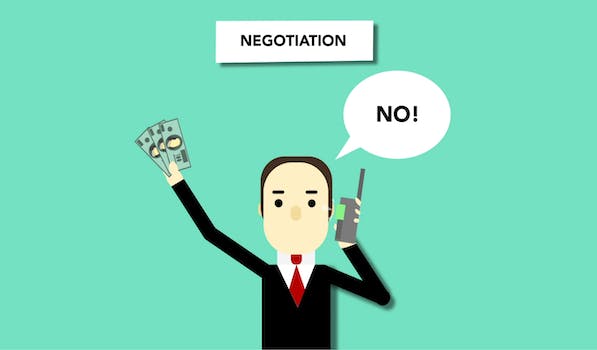How To Start A Restaurant Business Plan
“From concept to cuisine: A step-by-step guide to launching your dream restaurant.”
Introduction
Starting a restaurant business can be an exciting and rewarding venture, but it requires careful planning and preparation. A well-crafted business plan is essential to the success of any restaurant, as it outlines the goals, strategies, and financial projections for the business. In this article, we will discuss the key elements of a restaurant business plan and provide tips on how to create a plan that will help you achieve your goals.
Conducting Market Research
Starting a restaurant business can be an exciting and rewarding venture, but it requires careful planning and preparation. One of the most important steps in starting a restaurant business is conducting market research. This involves gathering information about your target market, competitors, and industry trends to help you make informed decisions about your business.
The first step in conducting market research is to define your target market. This includes identifying the demographics of your potential customers, such as age, gender, income, and location. You should also consider their preferences and behaviors, such as their dining habits, favorite cuisines, and dining occasions. This information will help you tailor your menu, pricing, and marketing strategies to meet the needs and preferences of your target market.
Once you have defined your target market, you need to research your competitors. This involves identifying other restaurants in your area that offer similar cuisine, price points, and dining experiences. You should visit these restaurants, try their food, and observe their operations to understand their strengths and weaknesses. This information will help you differentiate your restaurant from your competitors and identify opportunities for improvement.
In addition to researching your competitors, you should also research industry trends. This includes staying up-to-date on the latest food and beverage trends, technology advancements, and regulatory changes that may impact your business. You can gather this information by attending industry conferences, reading industry publications, and networking with other restaurant owners and industry professionals.
Once you have gathered all of this information, you can use it to develop your restaurant business plan. Your business plan should include a detailed analysis of your target market, competitors, and industry trends, as well as your marketing, operations, and financial strategies. It should also include a SWOT analysis, which identifies your restaurant’s strengths, weaknesses, opportunities, and threats.
In addition to helping you develop your business plan, conducting market research can also help you make informed decisions about your restaurant’s location, menu, pricing, and marketing strategies. For example, if you discover that your target market prefers healthy, organic food, you may decide to offer a menu that emphasizes these options. If you discover that your competitors are offering similar cuisine at lower prices, you may decide to differentiate your restaurant by offering a unique dining experience or higher-quality ingredients.
In conclusion, conducting market research is a critical step in starting a restaurant business. It helps you understand your target market, competitors, and industry trends, and provides valuable insights that can inform your business decisions. By taking the time to conduct thorough market research, you can increase your chances of success and build a restaurant that meets the needs and preferences of your customers.
Creating a Menu and Pricing Strategy

Starting a restaurant business can be an exciting and rewarding venture. However, it requires careful planning and execution to ensure success. One of the most critical aspects of starting a restaurant is creating a menu and pricing strategy. In this article, we will discuss some tips on how to create a menu and pricing strategy that will help your restaurant stand out and attract customers.
The first step in creating a menu is to determine your restaurant’s concept and target audience. Your menu should reflect the type of cuisine you will be serving and the atmosphere you want to create. For example, if you are opening a fine dining restaurant, your menu should feature high-end dishes and ingredients. On the other hand, if you are opening a casual dining restaurant, your menu should be more affordable and feature comfort food.
Once you have determined your restaurant’s concept and target audience, it’s time to start creating your menu. Start by brainstorming dishes that fit your concept and target audience. Consider the ingredients you will need, the cooking techniques required, and the presentation of each dish. It’s important to create a menu that is both appealing and feasible to execute in your kitchen.
When creating your menu, it’s also important to consider dietary restrictions and preferences. Make sure to include vegetarian, vegan, and gluten-free options to cater to a wider audience. You can also consider offering dishes that are low in calories or high in protein for health-conscious customers.
After you have created your menu, it’s time to determine your pricing strategy. Pricing your menu can be a challenging task, as you want to ensure that your prices are competitive while still allowing you to make a profit. Start by researching the prices of similar restaurants in your area and adjust your prices accordingly.
When pricing your menu, it’s important to consider the cost of ingredients, labor, and overhead expenses. You should also factor in the profit margin you want to achieve. A good rule of thumb is to aim for a food cost of 30% to 35% and a profit margin of 10% to 15%.
Another pricing strategy to consider is offering specials and promotions. This can help attract customers and increase sales. For example, you can offer a discount on certain dishes during happy hour or a buy-one-get-one-free promotion on certain days of the week.
In addition to pricing your menu, it’s important to consider the layout and design of your menu. Your menu should be easy to read and navigate, with clear descriptions of each dish. You can also consider adding photos of your dishes to entice customers.
In conclusion, creating a menu and pricing strategy is a crucial aspect of starting a restaurant business. It requires careful planning and consideration of your restaurant’s concept, target audience, and overhead expenses. By following these tips, you can create a menu and pricing strategy that will help your restaurant stand out and attract customers. Remember to be creative, flexible, and willing to make adjustments as needed to ensure the success of your restaurant.
Developing a Marketing Plan
Starting a restaurant business can be an exciting and rewarding venture. However, it requires careful planning and execution to ensure success. One of the most critical aspects of starting a restaurant business is developing a marketing plan. A marketing plan is a comprehensive document that outlines your restaurant’s marketing strategies, target audience, and budget. In this article, we will discuss how to develop a marketing plan for your restaurant business.
The first step in developing a marketing plan is to identify your target audience. Your target audience is the group of people who are most likely to visit your restaurant. To identify your target audience, you need to consider factors such as age, gender, income, and location. For example, if you are opening a fine dining restaurant, your target audience may be affluent individuals aged 30-60 who live in the surrounding area.
Once you have identified your target audience, the next step is to develop a marketing strategy. Your marketing strategy should outline how you plan to reach your target audience and promote your restaurant. There are several marketing channels you can use, including social media, email marketing, print advertising, and events. It’s essential to choose the channels that are most effective for your target audience and budget.
Social media is an excellent marketing channel for restaurants. Platforms like Facebook, Instagram, and Twitter allow you to connect with your target audience and promote your restaurant. You can use social media to share photos of your food, post updates about your restaurant, and run promotions. It’s essential to post regularly and engage with your followers to build a loyal following.
Email marketing is another effective marketing channel for restaurants. You can use email marketing to send newsletters, promotions, and updates to your subscribers. It’s essential to build a quality email list by offering incentives like a free appetizer or dessert for signing up. You can also segment your email list based on your subscribers’ preferences and send targeted messages.
Print advertising is a traditional marketing channel that can still be effective for restaurants. You can use print advertising to promote your restaurant in local newspapers, magazines, and flyers. It’s essential to choose the publications that are most read by your target audience and design eye-catching ads that stand out.
Events are another effective marketing channel for restaurants. You can host events like wine tastings, cooking classes, and live music to attract customers and promote your restaurant. It’s essential to promote your events on social media, email marketing, and print advertising to reach your target audience.
Finally, it’s essential to set a marketing budget for your restaurant. Your marketing budget should include the cost of advertising, promotions, events, and any other marketing expenses. It’s essential to allocate your budget effectively and track your return on investment (ROI) to ensure that your marketing efforts are effective.
In conclusion, developing a marketing plan is a critical step in starting a restaurant business. Your marketing plan should identify your target audience, develop a marketing strategy, choose effective marketing channels, set a marketing budget, and track your ROI. By following these steps, you can create a successful marketing plan that promotes your restaurant and attracts customers. Good luck!
Securing Funding and Financing Options
Starting a restaurant business can be an exciting and rewarding venture, but it also requires careful planning and preparation. One of the most important aspects of starting a restaurant is securing funding and financing options. In this article, we will discuss some tips on how to start a restaurant business plan and secure funding for your restaurant.
The first step in securing funding for your restaurant is to create a solid business plan. Your business plan should include a detailed description of your restaurant concept, target market, menu, pricing strategy, marketing plan, and financial projections. A well-written business plan will not only help you secure funding but also serve as a roadmap for your restaurant’s success.
Once you have a solid business plan in place, you can start exploring financing options. One of the most common ways to finance a restaurant is through a small business loan. You can apply for a loan through a bank or a small business administration (SBA) loan program. Before applying for a loan, make sure you have a good credit score and a solid business plan to present to the lender.
Another financing option is to seek out investors. Investors can provide the capital you need to start your restaurant in exchange for a share of ownership or a return on their investment. To attract investors, you will need to have a well-written business plan and a clear vision for your restaurant’s success.
Crowdfunding is another option for financing your restaurant. Crowdfunding allows you to raise money from a large number of people through online platforms such as Kickstarter or GoFundMe. To successfully crowdfund your restaurant, you will need to have a compelling story and a clear plan for how you will use the funds raised.
In addition to traditional financing options, there are also alternative financing options available for restaurants. For example, you can consider leasing equipment instead of purchasing it outright. This can help you conserve cash flow and reduce your upfront costs. You can also explore vendor financing options, where your suppliers provide financing for your restaurant in exchange for your business.
When securing funding for your restaurant, it’s important to keep in mind that lenders and investors will want to see that you have a solid plan for success. This means having a clear understanding of your target market, competition, and financial projections. You should also be prepared to answer questions about your experience in the restaurant industry and your management team.
In conclusion, starting a restaurant business requires careful planning and preparation, especially when it comes to securing funding and financing options. By creating a solid business plan and exploring different financing options, you can increase your chances of success and turn your restaurant dream into a reality. Remember to stay focused on your goals and be persistent in your pursuit of funding. With hard work and determination, you can build a successful restaurant that will bring joy and satisfaction to your customers for years to come.
Hiring and Training Staff
Starting a restaurant business can be an exciting and rewarding venture. However, it requires careful planning and execution to ensure success. One of the most important aspects of starting a restaurant is hiring and training staff. In this article, we will discuss some tips on how to hire and train staff for your restaurant business.
The first step in hiring staff for your restaurant is to determine your staffing needs. This will depend on the size and type of restaurant you plan to open. You will need to decide how many servers, cooks, and other staff members you will need to run your restaurant efficiently. Once you have determined your staffing needs, you can start the hiring process.
When hiring staff for your restaurant, it is important to look for individuals who are passionate about food and customer service. Look for candidates who have experience in the restaurant industry and who have a positive attitude. You can advertise job openings on job boards, social media, and local newspapers. You can also ask for referrals from friends and family members.
Once you have received applications, you can start the interview process. During the interview, ask questions that will help you determine if the candidate is a good fit for your restaurant. Ask about their experience, their availability, and their willingness to work in a fast-paced environment. You can also ask them to describe their favorite dish and why they enjoy working in the restaurant industry.
After you have hired your staff, it is important to train them properly. Training should include an orientation to the restaurant, its policies, and procedures. You should also provide training on food safety, customer service, and how to use equipment. Training should be ongoing, and you should provide feedback to your staff to help them improve their skills.
One way to train your staff is to provide them with a manual that outlines your restaurant’s policies and procedures. This manual should include information on how to handle customer complaints, how to prepare food, and how to use equipment. You can also provide training videos and hands-on training to help your staff learn the skills they need to succeed.
Another important aspect of training your staff is to provide them with feedback. Feedback should be constructive and should focus on areas where your staff can improve. You can provide feedback through regular performance reviews or by providing feedback in real-time. This will help your staff improve their skills and provide better service to your customers.
In addition to training your staff, it is important to create a positive work environment. This can be achieved by providing your staff with a comfortable and safe work environment, offering competitive wages and benefits, and recognizing their hard work and achievements. You can also provide opportunities for your staff to advance their careers within your restaurant.
In conclusion, hiring and training staff is an important aspect of starting a restaurant business. By hiring passionate and experienced staff members and providing them with proper training and feedback, you can create a successful and thriving restaurant. Remember to create a positive work environment and provide opportunities for your staff to advance their careers. With these tips, you can start your restaurant business on the right foot.
Conclusion
To start a restaurant business plan, it is important to conduct thorough research, define your target market, create a menu, determine your budget and funding sources, and develop a marketing strategy. It is also crucial to have a solid understanding of the industry and competition. By following these steps and creating a comprehensive business plan, you can increase your chances of success in the competitive restaurant industry.




